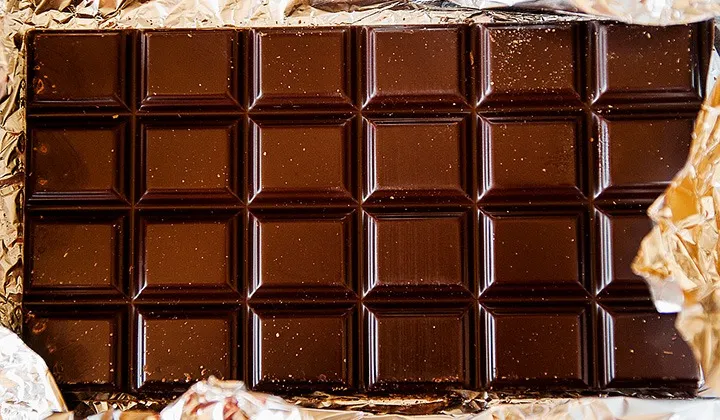Not all dark chocolate is created equal

“Dark chocolate can be good for you, and when I say ‘can,’ it’s about what type of dark chocolates are you eating. Don’t eat the [kinds] with too much sugar,” Jacques Torres, Founder of Jacques Torres Chocolate told CNBC’s “On the Money” in an interview.
This is absolutely true.
Dark chocolate can be good for you. However, like the proof of an alcoholic beverage, cocoa content is a quantitative measure not a qualitative measure. The cocoa content of a dark chocolate is not a reliable indicator of anything other than the amount of sugar in the chocolate. It says nothing about the quality of ingredients used or the care used to make the chocolate. Cocoa content is not a reliable indicator of the healthy–ness of a chocolate.
“Dark [chocolate] is a milk chocolate that contains over 50 percent cocoa contents and very little sugar,” Torres told CNBC.
Umnh, no. To claim that dark chocolate is a “milk chocolate that contains over 50 percent cocoa contents and very little sugar,” is a complete misrepresentation of the FDA’s regulations on the subject on Chef Torres’ part.
Surprisingly to many, especially given how often the term is used, *there is no legal definition for dark chocolate*. There are legal definitions for both milk chocolate and white chocolate, but *not* one for dark chocolate. What we call dark chocolate fits into the category called *sweet* chocolate, which includes semi–sweet and bittersweet chocolates. And the FDA’s standard of identity for sweet chocolate – CFR 21.163.123 – does allow manufacturers to add dairy ingredients to sweet chocolate.
If you have a sensitivity to cow’s milk you should always check the ingredient list of a “dark” chocolate bar, especially ones found in grocery and drug stores to make sure no dairy ingredients are listed. The cheaper the bar is the more likely it is that it contains some form of dairy ingredient because they are cheaper than cocoa.
These dairy ingredients are entirely optional in a sweet chocolate, but they are required in a milk chocolate (and that’s a key difference between the categories). Ingredients such as butter (or more commonly butter oil aka anhydrous milk fat), are commonly used to reduce the likelihood of fat bloom, extending the shelf life of the chocolate without adding preservatives.
A dark chocolate with 50% cocoa content is likely about to be 49% sugar. A “dark milk” chocolate with 50% cocoa content is around 25% milk and 25% sugar. It may taste less sweet than the 50% dark chocolate because milk sugar (lactose) is less sweet than sucrose, or white sugar.
For decades, all forms of dietary fat has been erroneously vilified by the medical community, at the deliberate behest of the sugar lobby it appears. While it is important to reduce overall caloric intake and moderate the consumption of fat, it’s probably far more important (I am not a doctor and I am not offering advice here) to moderate how much sugar is consumed. So, when you look at the nutrition facts panel of a chocolate bar, pay just as much (or more) attention to the sugar content as the fat content. In part, this is because cocoa butter is considered to be a comparatively healthier form of fat.